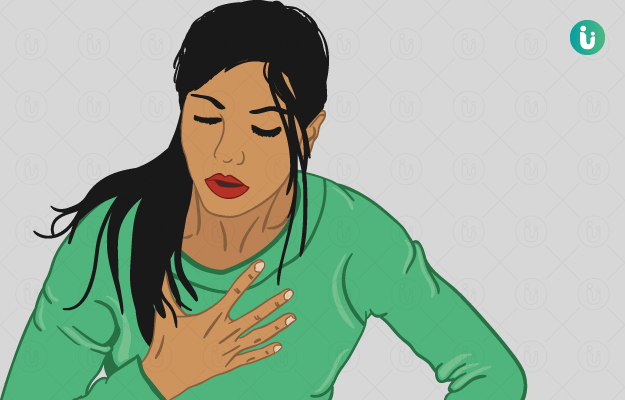What isdifficulty breathing?
When it is hard or uncomfortable for an individual to take in oxygen needed for his/her body requirements, then the individual has breathing difficulty or shortness of breath. It may be mild due to conditions like a stuffy nose or severe due to serious conditions like pneumonia.
What are its main signs and symptoms?
Signs and symptoms associated with breathing difficulty which are alarming include:
- Trouble breathing when you lie flat or breathlessness lasting for more than 30 minutes or worsening of pre-existing symptoms despite the use of inhalers.
- Whistling sound when you breathe in or out (wheezing)
- High fever, with chills and cough.
- Turning blue (bluish discoloration) of lips or fingertips.
- A high-pitched noise that occurs with breathing, which is called stridor.
- Fainting
- Swelling in your feet and ankles
What are the main causes?
Breathing difficulty is mainly caused due to:
- Anxiety and panic attacks
- Problems in the certain parts of the airway system, including the trachea and the bronchi
- Allergies
- Anaemia
- Low fitness level
- Lung conditions which include pneumonia, asthma, etc.
- In individuals, whose heart is unable to pump enough blood to supply oxygen like heart attack, heart failure.
How is it diagnosed and treated?
Initially, your physician will take a detailed medical history of your condition along with other symptoms. A physical examination will be performed thereafter. Depending on the history, individual’s age, and findings on examination, the physician will advise tests which include:
- Blood tests to check the blood –oxygen levels
- Allergy tests
- A chest X-ray
- A throat swab (A sample is collected from the back of your throat and the specimen is tested for infections)
- Body plethysmography
- Diffusion test
- Pulmonary function tests.
Treating the underlying cause immediately is important. This includes antibiotics, diuretics, anti-inflammatory medicines, steroids, etc.
Treatment of breathing difficulty additionally includes the following:
-
Pursed-lip breathing
In this technique, the individual is instructed to breathe in through the mouth or nose, by keeping lips in position as if whistling (pursing the lips), followed by breathing out to expel all the air in the lungs.
-
Positioning
This technique is generally used in case of shortness of breath, as muscles when relaxed make breathing easier. It is generally used while climbing stairs. In this technique, the following is done:
After taking rest against the wall, you should lean forward positioning your hands on your thighs, which helps you to relax your chest and shoulder. Thus, when they are freed, you get help to breathe. Pursed-lip breathing can be used.
- Paced Breathing
This technique is used when you walk or lift light objects, as it prevents or decreases shortness of breath.
- For walking: An individual should stand still and breathe in, and after walking a few steps, breathe out. Then rest and begin again.
- For lifting: When an individual is carrying anything, he/she should carry it close to his/her body while walking, which saves energy and before lifting, he/she should take a deep breath.
- Desensitization
This technique helps you to face breathing difficulty without panic. It includes:
Positioning, pursed-lip breathing, and paced breathing should be practiced regularly to build up your confidence. People around you should be informed of your condition.

 Doctors for Difficulty Breathing
Doctors for Difficulty Breathing  OTC Medicines for Difficulty Breathing
OTC Medicines for Difficulty Breathing
 Difficulty Breathing articles
Difficulty Breathing articles

 First Aid for Difficulty Breathing
First Aid for Difficulty Breathing
 Home Remedies for Difficulty Breathing
Home Remedies for Difficulty Breathing







 Editorial Team
Editorial Team

 Dr. Rajalakshmi VK (AIIMS)
Dr. Rajalakshmi VK (AIIMS)











